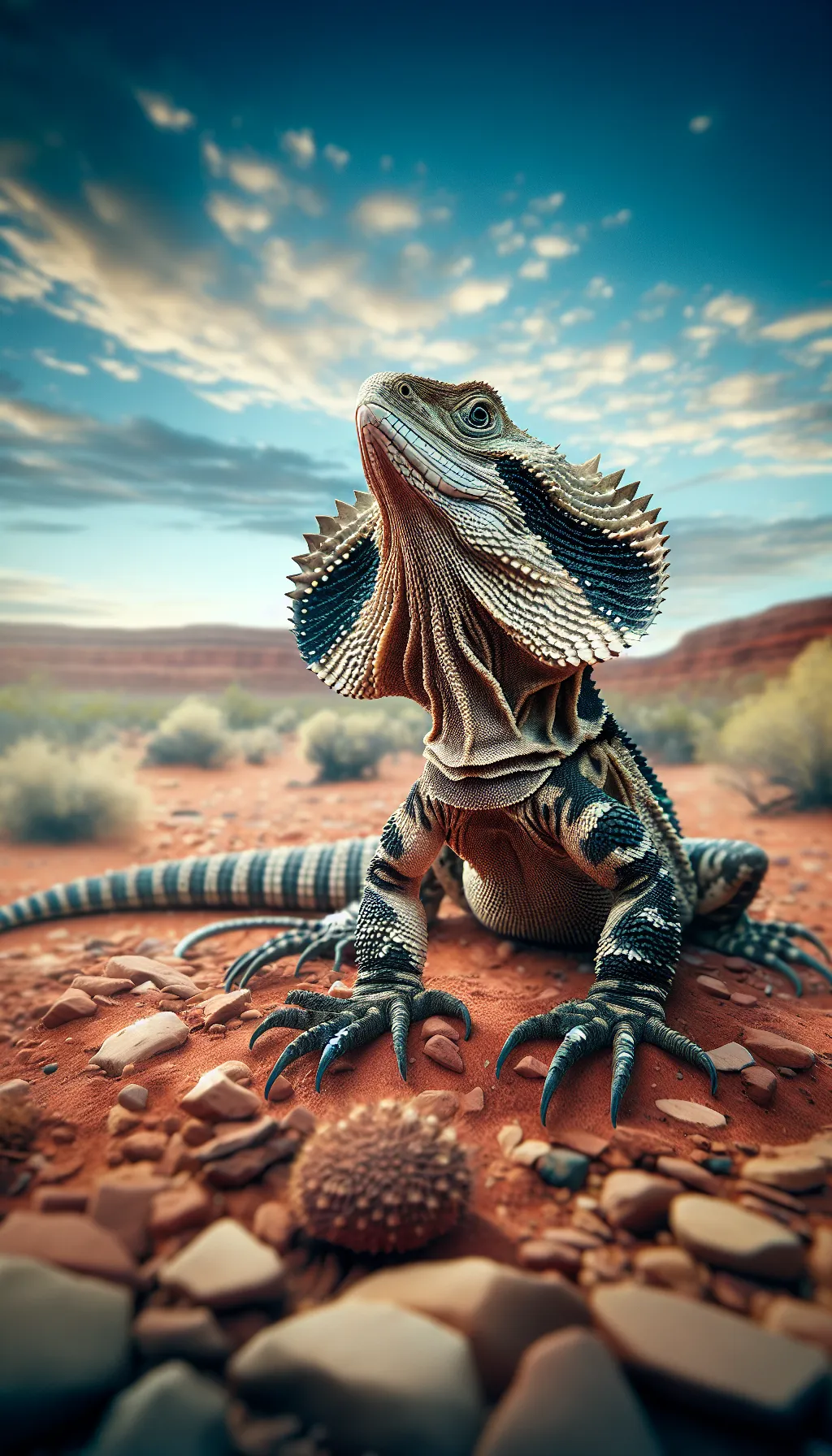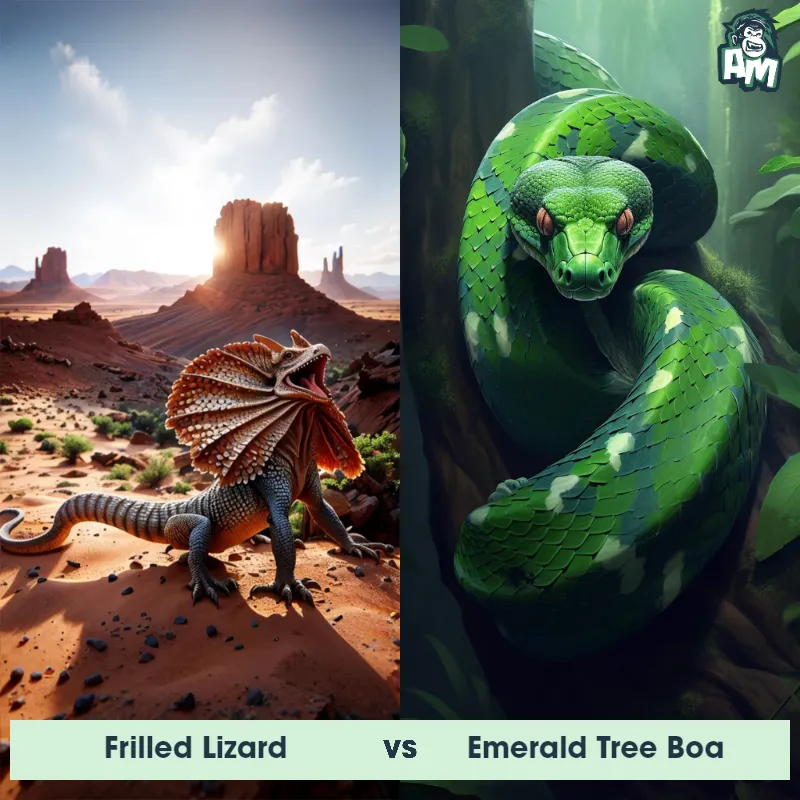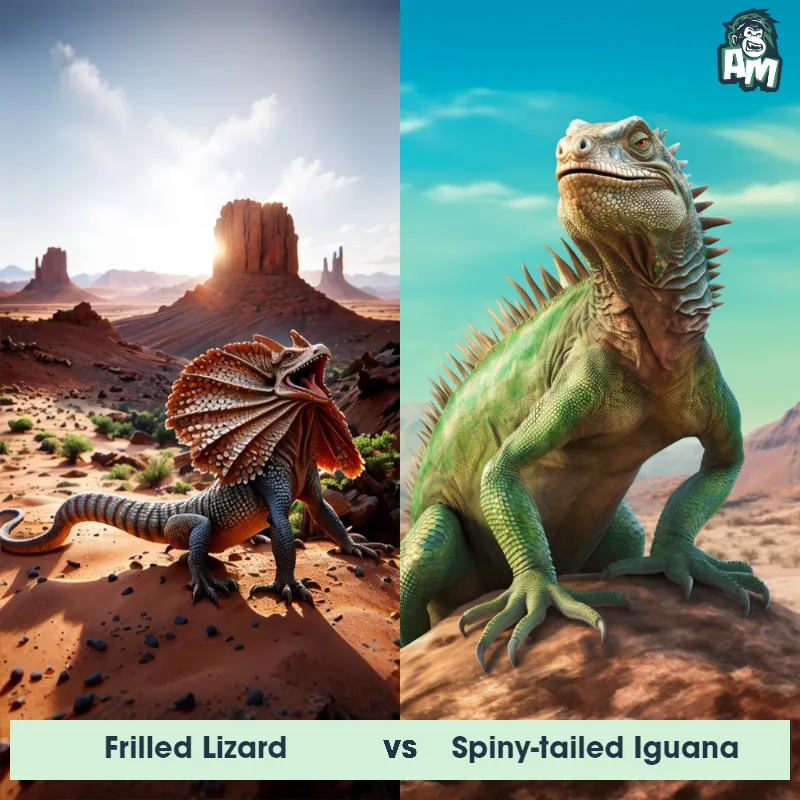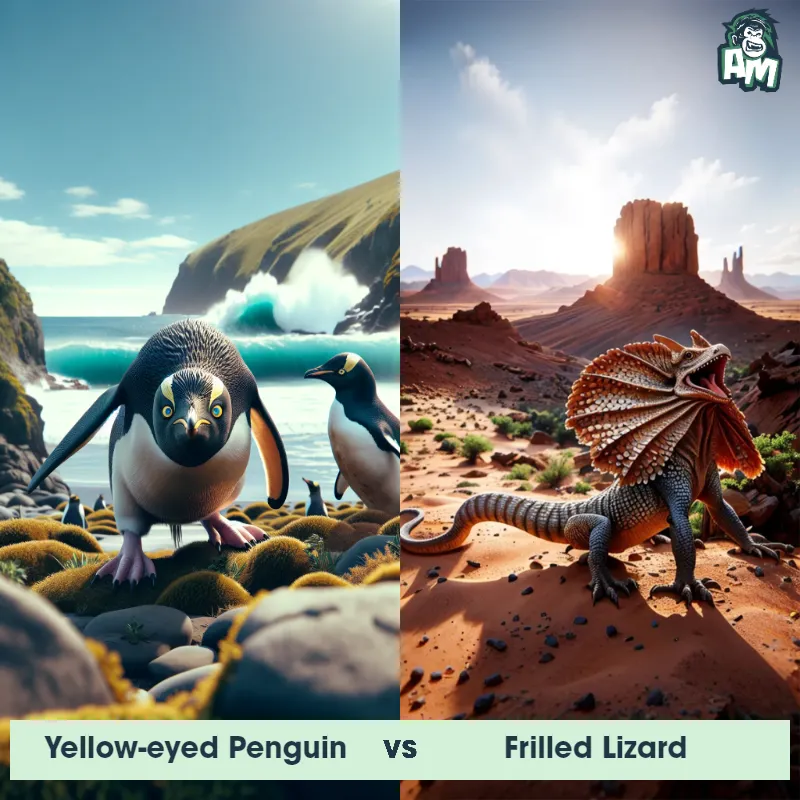The Frilled Lizard
The Frilled Lizard, also known as Chlamydosaurus kingii, is a unique reptile native to northern Australia and southern New Guinea. One of its most striking features is the large frill around its neck, which it can expand and erect as a defense mechanism or as a display during courtship rituals. The frilled lizard has a slender body covered in scales, with a long tail and sharp, curved claws. It has a brown or gray coloration, with patches of orange or yellow, providing camouflage in its natural habitat of woodlands and tropical rainforests. This lizard is primarily arboreal, spending much of its time climbing trees and basking in the sun.

| Frilled Lizard | |
|---|---|
| Size | Up to 3 feet (91 cm) in length |
| Weight | Up to 1 pound (0.45 kg) |
| Speed | 12mph (19km/h) |
| Key Strength | Displaying frill and lunging |
| Biggest Weakness | Vulnerable to larger predators |
| Scientific Name | Chlamydosaurus kingii |
| Family | Agamidae |
| Habitat | Trees, woodlands, and forests |
| Geography | Northern Australia and New Guinea |
| Diet | Insects, small birds, and reptiles |
| Lifespan | 6 years - 10 years |

The Frilled Lizard
The Frilled Lizard, also known as Chlamydosaurus kingii, is a unique reptile native to northern Australia and southern New Guinea. One of its most striking features is the large frill around its neck, which it can expand and erect as a defense mechanism or as a display during courtship rituals. The frilled lizard has a slender body covered in scales, with a long tail and sharp, curved claws. It has a brown or gray coloration, with patches of orange or yellow, providing camouflage in its natural habitat of woodlands and tropical rainforests. This lizard is primarily arboreal, spending much of its time climbing trees and basking in the sun.
Fun Fact: The Frilled Lizard has a remarkable ability to run on its hind legs, reaching speeds of up to 15 miles per hour, which is quite impressive for a reptile.
| Frilled Lizard | |
|---|---|
| Size | Up to 3 feet (91 cm) in length |
| Weight | Up to 1 pound (0.45 kg) |
| Speed | 12mph (19km/h) |
| Key Strength | Displaying frill and lunging |
| Biggest Weakness | Vulnerable to larger predators |
| Scientific Name | Chlamydosaurus kingii |
| Family | Agamidae |
| Habitat | Trees, woodlands, and forests |
| Geography | Northern Australia and New Guinea |
| Diet | Insects, small birds, and reptiles |
| Lifespan | 6 years - 10 years |
Frilled Lizard Matchups
We use AI to simulate matchups between the Frilled Lizard and other animals. Our simulation considers size, strength, and natural predatory behaviors to determine the most likely outcome.
Frilled Lizard: Diet, Predators, Aggression, and Defensive Behaviors
What do Frilled Lizards eat?
Frilled lizards primarily feed on insects, including crickets, grasshoppers, and beetles. As Frilled Lizard grow larger, Frilled Lizard may also consume small mammals, birds, and even other lizards. Their diet consists mainly of live prey.
Do Frilled Lizards have any predators?
Frilled lizards are vulnerable to predators such as birds of prey, snakes, and larger lizards. Their frill, used for defense, may not always be enough to deter these predators. Eggs and young frilled lizards are especially targeted by predators.
Are Frilled Lizards aggressive?
Frilled lizards are not typically aggressive towards humans or other animals. Frilled Lizard are known to be shy and may try to flee when threatened. However, if cornered or provoked, Frilled Lizard may become defensive and display aggressive behaviors, including hissing and biting.
Do Frilled Lizards fight with each other?
Male frilled lizards may engage in combat during the breeding season to establish dominance and gain access to females. This ritualistic fighting involves displaying their frills, bobbing their heads, and attempting to intimidate their opponent. Actual physical contact is rare, and fights usually end without serious injury.
How do Frilled Lizards defend themselves?
Frilled lizards are known for their ability to expand and display a large frill around their necks when threatened. This frill, which is supported by cartilage and covered in colorful scales, serves as an intimidation display to potential predators. Frilled Lizard may also hiss loudly and open their mouths to appear more threatening.
What is Frilled Lizards' biggest weakness in a fight?
Despite their intimidating frills and aggressive displays, frilled lizards are relatively small in size and have fragile bodies. Their primary weakness in a fight is their vulnerability to larger predators that can overpower them with strength or speed. Without the ability to inflict serious harm, Frilled Lizard rely on their defensive behaviors to deter attackers.
Fun Fact: When threatened, the Frilled Lizard is famous for its intimidating display. It opens its mouth wide, exposing a bright red or yellow lining, expands its frill, and hisses loudly, creating a fearsome and intimidating appearance.
Fun Fact: The Frilled Lizard is an ambush predator and primarily feeds on insects, small mammals, birds, and reptiles. It uses its sharp teeth and powerful jaws to catch and devour its prey, often striking with lightning-fast accuracy from a hidden position among the trees.















